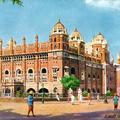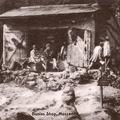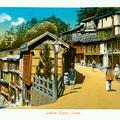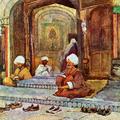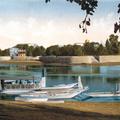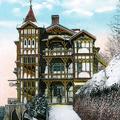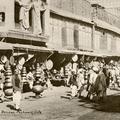Bombay. General Post Office.
[Original caption] General Post Office - Here is to be found a very fine building and an immense amount of business is transacted here. [end]
Opened in 1913, with a central dome modelled after the Gol Gumbaz in Bijapur, this remains one of the iconic

